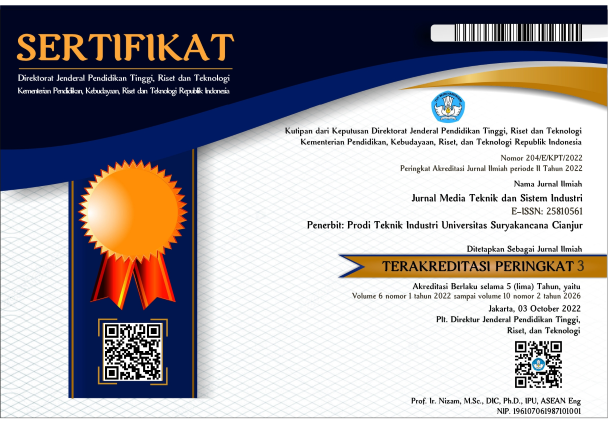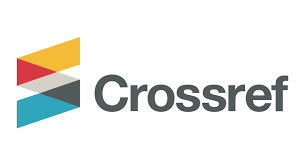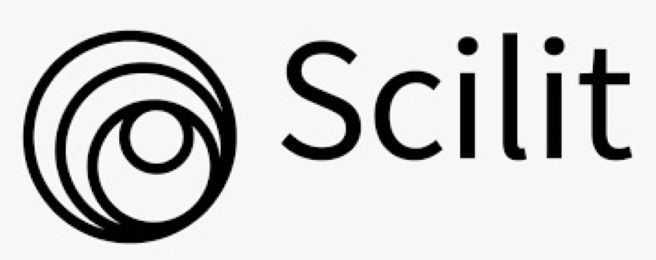Analisis Karakteristik Konsumen Hotel “X†dengan Menggunakan Metode K-Means Clustering
Abstract
Abstract— Hotel "X" has a problem with a marketing strategy that is incompatible with the characteristics of consumers staying at the hotel "X". This is because the hotel "X" does not yet know the characteristics of its consumers. The marketing strategy that is not optimal also affects the occupancy rate of the "X" hotel. This problem can be seen from the fluctuating number of overnight stayers. So that the number of hotel visitors is small. The purpose of this study is to determine the marketing strategy that is following the characteristics of consumers in the hotel "X", using the K-means clustering method. The research data collection was done by collecting secondary data based on historical data of Hotel "X", which amounted to 725 transactions. The data collected is data on gender, room type, travel companions, length of stay, price, area of origin, booking method. Data processing using the k-means clustering method was carried out with the help of SPSS 20. The results of the analysis of the k-means clustering method were gender, type of room booked, number of friends, length of stay, room price ordered, nationality, booking method. This study obtained 3 clusters. The first cluster is a cluster that often books economical rooms and orders online called online-low customer. The second cluster is the medium customer, namely the consumer cluster that orders middle classrooms, and the 3rd cluster which is similar to the 1st cluster but ordering through media other than online, namely the offline-manual customer.
Keywords— Consumer characteristic, Hotel, K-means clustering.
Â
Abstrak— Hotel “X†memiliki permasalahan pada strategi pemasaran yang tidak sesuai dengan karakteristik konsumen yang menginap di hotel “Xâ€. Hal ini dikarenakan hotel “X†belum mengetahui karakteristik konsumennya. Strategi pemasaran yang belum maksimal juga mempengaruhi tingkat okupansi hotel “Xâ€. Permasalahan ini terlihat dari jumlah penginap selama 1 bulan yang fluktuatif. Sehingga jumlah pengujung hotel sedikit. Tujuan penelitian ini untuk mengetahui strategi pemasaran yang sesuai dengan karakteristik konsumen di hotel “Xâ€, dengan metode K-means clustering. Pengumpulan data penelitian dilakukan dengan cara mengumpulkan data sekunder berdasarkan data historis Hotel “X†yang berjumlah 725 transaksi. Data yang dikumpulkan adalah data jenis kelamin, tipe kamar, teman perjalanan, lama menginap, harga, asal daerah, metode booking. Pengolahan data dengan metode k-means clustering dilakukan dengan bantuan SPSS 20. Hasil analisis dari metode k-means clustering faktor yang berpengaruh adalah jenis kelamin, tipe kamar yang dipesan, jumlah teman, lama menginap, harga kamar yang di pesan, kewarganegaraan, metode booking. Penelitian ini memperoleh 3 cluster. Cluster pertama merupakan cluster yang sering memesan kamar ekonomis dan memesan secara daring disebut Âonline-low customer. Cluster ke-2 bernama medium customer yaitu cluster konsumen yang memesan kamar kelas menengah, dan cluster ke-3 yang mirip dengan cluster ke-1 tapi memesan melalui media selain daring yaitu offline-manual customer.
Kata kunci— Karakteristik konsumen, Hotel, K-means clustering.
Â
Full Text:
PDFReferences
I. Sidik, “Pariwisata Setoran Terbesar Kota Bandung - Travelounge Indonesia,†travelounge, 2018. [Online]. Available: https://travelounge.co/pariwisata-setoran-terbesar-kota-bandung/. [Accessed: 11-May-2020].
I. Masrofah and B. E. Putro, “Clustering of the water characteristics of the Cirata reservoir using the k-means clustering method,†in the 5Th International Conference on Industrial, Mechanical, Electrical, and Chemical Engineering 2019 (Icimece 2019), 2020, vol. 2217, p. 030010.
Yulia Darmi and Agus Setiawan, “Penerapan Metode Clustering K-Means Dalam Pengelompokan Penjualan Produk,†J. Media Infotama, vol. 12, no. 2, 2016.
R. Setiawan, “Penerapan Data Mining Menggunakan Algoritma K-Means Clustering Untuk Menentukan Strategi Promosi Mahasiswa Baru ( Studi Kasus : Politeknik Lp3i Jakarta ),†J. Lentera Ict, vol. 3, no. 1, pp. 76–92, 2016.
W. Purba, S. Tamba, and J. Saragih, “The effect of mining data k-means clustering toward students profile model drop out potential,†in Journal of Physics: Conference Series, 2018, vol. 1007, no. 1.
C. A. Selang, P. Bauran Pemasaran, and C. A. Selang Fakultas Ekonomi Jurusan Manajemen Universitas Sam Ratulangi Manado, “BAURAN PEMASARAN (MARKETING MIX) PENGARUHNYA TERHADAP LOYALITAS KONSUMEN PADA FRESH MART BAHU MALL MANADO,†J. EMBA, vol. 71, no. 3, pp. 71–80, Jun. 2013.
N. Nelly, “KOMPONEN MANAJEMEN JASA TERPADU TERHADAP KEPUASAN NASABAH TABUNGAN PADA PT. BANK DANAMON INDONESIA, TB CABANG MESJID LAMA PALEMBANG,†J. Ilm. Ekon. Glob. Masa Kini, vol. 7, no. 1, pp. 13–17, Jul. 2016.
K. W. Bank, V. Jakarta, M. Program, and P. M. Manajemen, “Pengaruh Price, People, Process, Dan Physical Evidence Terhadap Brand Image,†Mercu Buana University, 2014.
DOI: https://doi.org/10.35194/jmtsi.v4i2.995
Refbacks
- There are currently no refbacks.

This Journal is licensed under a Creative Commons Attribution-ShareAlike 4.0 International License.
Jurnal Media Teknik dan Sistem Industri ISSN: 2581-0561 (online); 2581-0529 (cetak).
Gedung Fakultas Teknik UNSUR Jl. Pasir Gede Raya, Cianjur, Jawa Barat 43216| Telp./Fax. (0263) 283578 |E-mail: jmtsi@unsur.ac.id
JMTSI (Jurnal Media Teknik dan Sistem Industri) INDEXED BY :


















